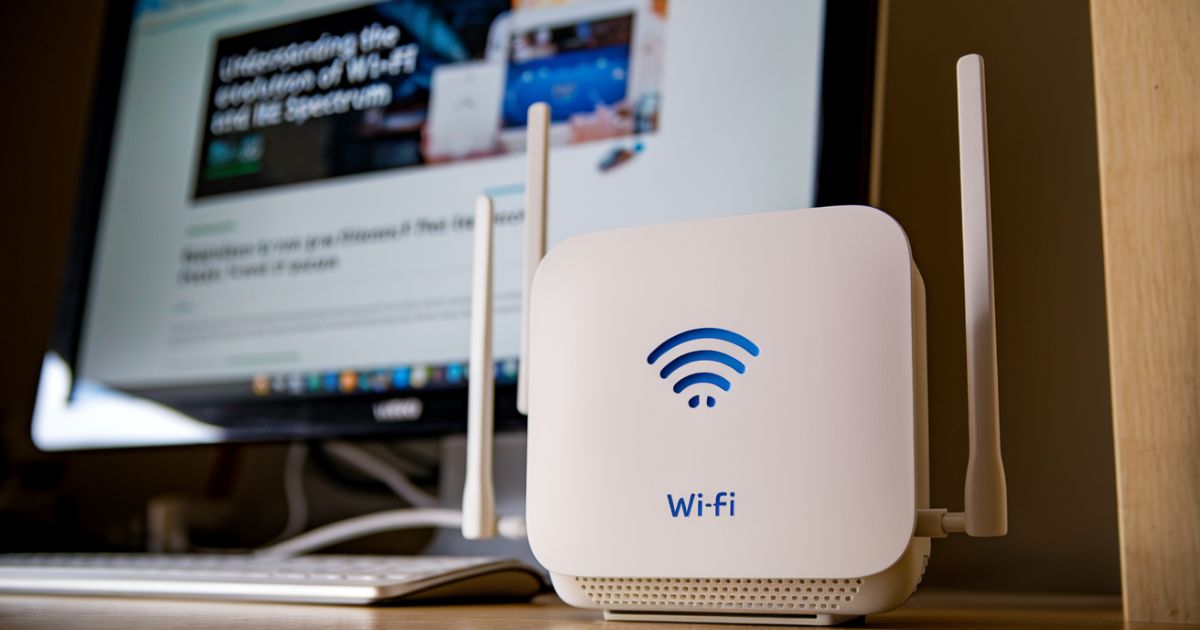The Beginnings of WiFi
Wireless Fidelity has revolutionized internet connectivity, transforming how humanity interacts with digital technologies.
When WiFi first emerged, it represented a fundamental shift from traditional wired internet connections, offering unprecedented flexibility and accessibility.
The journey of wireless technology began with rudimentary dial-up internet connections, characterized by slow speeds and limited functionality.
Early internet users experienced frustrating connection times and restricted mobility, tethered to physical network cables. The introduction of WiFi marked a pivotal moment in technological evolution, liberating users from these constraints.
Initial WiFi standards, such as IEEE 802.11b, were remarkably limited compared to contemporary technologies.
These early iterations supported data transmission rates of merely 11 Mbps, a figure that seems almost archaic in today’s high-speed digital landscape.
However, continuous research and technological advancements have propelled wireless fidelity into an era of unprecedented performance and reliability.
The transformation from slow, unreliable wireless connections to today’s broadband and fiber-optic networks represents a testament to human innovation.
Engineers and researchers like Q1 Koziol have been instrumental in driving these technological breakthroughs, systematically addressing challenges that once seemed insurmountable.
Q1 Koziol’s Contributions
Q1 Koziol emerges as a pivotal figure in the WiFi technology ecosystem. His groundbreaking research has consistently pushed the boundaries of wireless connectivity, solving complex challenges in signal transmission and network performance.
Signal interference represents one of the most persistent obstacles in wireless networking. Koziol’s research focused intensively on improving signal strength and mitigating interference, particularly in densely populated technological environments.
By developing advanced network protocols, he enabled more stable and reliable wireless connections.
Bandwidth limitations posed another significant challenge that Koziol addressed comprehensively.
As the number of connected devices exponentially increased, traditional network infrastructures struggled to maintain performance.
His innovative approaches to network protocol design allowed for more efficient bandwidth utilization, ensuring smoother connectivity even in high-demand scenarios.
The scalability improvements introduced through Koziol’s work have been transformative. Homes and businesses can now support numerous simultaneously connected devices without experiencing dramatic performance degradation. This achievement represents a critical milestone in wireless technology development.
Advancements in WiFi Technology
The evolution of WiFi standards demonstrates remarkable technological progression. WiFi 4 (IEEE 802.11n) represented an initial leap, offering speeds up to 600 Mbps.
Subsequently, WiFi 5 (IEEE 802.11ac) elevated performance capabilities, supporting speeds reaching 3.5 Gbps.
WiFi 6 (IEEE 802.11ax) marked a revolutionary advancement in wireless standards. This iteration dramatically enhanced both speed and network capacity, enabling multiple devices to operate seamlessly without compromising overall network performance.
The introduction of WiFi 6E, expanding into the 6 GHz spectrum, further solidified these improvements.
Energy efficiency emerged as another critical focus area in next-generation WiFi technologies. Smart home products and Internet of Things (IoT) devices benefit significantly from these advancements, requiring less power while maintaining constant connectivity.
Read This Post: CNO Fiduciary Financial Advisors: Putting Your Interests First in Wealth Planning
The Role of IEEE Spectrum
IEEE Spectrum serves as a critical platform for disseminating technological innovations in wireless technology.
This publication bridges the gap between cutting-edge research and public understanding, offering comprehensive insights into emerging WiFi developments.
The journal has been instrumental in highlighting groundbreaking work by researchers like Q1 Koziol, providing a sophisticated platform for sharing complex wireless connectivity advancements.
Through detailed technical articles, IEEE Spectrum enables technology enthusiasts, engineers, and industry professionals to stay informed about the latest network protocol improvements and wireless tech evolution.
By covering intricate research on signal interference solutions and bandwidth efficiency, the publication plays a pivotal role in accelerating technological progress.
Its expert-driven content ensures that innovations in WiFi standards receive rigorous academic and professional scrutiny.
The Rise of WiFi Technology: From Modem to Fiber
The technological journey from basic modems to advanced fiber-optic networks represents a remarkable transformation in internet connectivity.
Early internet users experienced limited dial-up connections, characterized by slow speeds and constant interruptions.
The emergence of wireless fidelity fundamentally revolutionized how people access digital resources.
By eliminating physical cable requirements, WiFi democratized internet access, enabling unprecedented mobility and convenience across homes, businesses, and public spaces.
How WiFi Impacts Everyday Life
WiFi has become an indispensable infrastructure supporting modern communication. From enabling online work and remote education to facilitating video calls and streaming services, wireless technology permeates every aspect of contemporary social interaction.
Productivity, entertainment, and global connectivity now depend critically on robust wireless network performance. Smart home products and emerging technological ecosystems increasingly rely on sophisticated WiFi infrastructure.
WiFi vs. Wired Internet: Key Differences
Wireless and wired internet connections each offer distinct advantages. While WiFi provides unparalleled flexibility and mobility, wired internet traditionally delivers more stable, consistent performance.
The ongoing technological evolution continues to narrow performance gaps, with next-generation WiFi standards progressively matching and sometimes exceeding traditional wired connection capabilities.
Challenges in WiFi Technology
WiFi technologies face persistent challenges that researchers continue to address. Signal interference remains a critical issue, often caused by physical obstacles like walls, electronic devices, and competing wireless networks.
These disruptions can significantly degrade network performance and reduce connection reliability.
Bandwidth limitations represent another significant challenge in modern wireless connectivity. As the number of connected devices exponentially increases, networks struggle to maintain consistent performance.
Smart home ecosystems, multiple users, and bandwidth-intensive applications compound these challenges.
Researchers like Q1 Koziol and organizations such as IEEE Spectrum continuously develop innovative solutions to mitigate these technological constraints.
Advanced network protocols and next-generation WiFi standards aim to enhance signal strength, reduce interference, and improve overall network efficiency.
Understanding WiFi Standards: A Timeline of Key Developments
The evolution of WiFi standards demonstrates remarkable technological progression:
- IEEE 802.11b: Initial standard with limited performance
- IEEE 802.11n (WiFi 4): Improved speeds up to 600 Mbps
- IEEE 802.11ac (WiFi 5): Enhanced performance reaching 3.5 Gbps
- IEEE 802.11ax (WiFi 6): Significant improvements in device handling and efficiency
- WiFi 6E: Expanded spectrum utilization
- WiFi 7: Emerging standard promising further performance enhancements
How IEEE Spectrum Shapes the Wireless Tech Industry
IEEE Spectrum serves as a crucial conduit for technological innovation, providing comprehensive coverage of wireless technology advancements.
Through expert articles and in-depth research analyses, the publication informs both professionals and consumers about emerging connectivity solutions.
The journal’s rigorous approach to reporting technological developments ensures that wireless tech industry stakeholders remain informed about cutting-edge research, network protocol improvements, and potential future innovations.
Tips for Optimizing Your WiFi Network
Improving WiFi performance requires strategic approaches:
- Position your router centrally for optimal signal distribution
- Minimize interference by separating router from electronic devices
- Utilize 5 GHz and 6 GHz bands for faster, less congested connections
- Regularly update router firmware
- Manage connected device quantities
- Consider WiFi 6 and WiFi 6E compatible equipment
Future of WiFi: What’s Next?
Emerging WiFi technologies promise unprecedented improvements. WiFi 7 is expected to deliver:
- Faster connection speeds
- Lower latency
- Enhanced energy efficiency
- Improved bandwidth management
- Better integration with 5G networks
Technological advancements will continue expanding wireless accessibility, supporting increasingly complex digital ecosystems and smart home technologies.
Frequently Asked Questions
What is the difference between WiFi 5 and WiFi 6?
WiFi 6 represents a significant technological leap compared to WiFi 5. It offers substantially improved performance, particularly in high-density environments. Key advantages include faster data transmission speeds, enhanced device handling capabilities, and superior energy efficiency. While WiFi 5 supported approximately 4-5 devices efficiently, WiFi 6 can manage up to 10-12 devices simultaneously without compromising network performance.
How has Q1 Koziol contributed to WiFi technology?
Q1 Koziol’s contributions to wireless technology have been transformative. His research focused on critical areas including:
- Reducing signal interference
- Enhancing bandwidth efficiency
- Developing advanced network protocols
- Improving WiFi scalability
Koziol’s work has been instrumental in making wireless connectivity more reliable and performant across diverse technological environments.
What is WiFi 6E?
WiFi 6E represents an evolutionary standard in wireless networking, expanding WiFi capabilities into the 6 GHz spectrum. This advancement provides:
- Reduced network congestion
- Increased available bandwidth
- Lower latency connections
- Enhanced performance in crowded network environments
Why is IEEE Spectrum important for WiFi development?
IEEE Spectrum serves as a critical platform for technological knowledge dissemination. Its significance includes:
- Sharing cutting-edge research
- Facilitating expert discourse
- Providing comprehensive wireless technology insights
- Bridging academic and industry perspectives
What are the future developments in WiFi technology?
Future WiFi developments are expected to focus on:
- WiFi 7 performance improvements
- 5G network integration
- Enhanced energy efficiency
- Expanded smart home connectivity
- Improved bandwidth management
Conclusion
The evolution of WiFi technology represents a remarkable journey of continuous innovation. From early dial-up connections to sophisticated wireless fidelity standards, researchers like Q1 Koziol and platforms such as IEEE Spectrum have been instrumental in driving technological progress.
As connectivity demands grow exponentially, WiFi will continue adapting, offering faster, more reliable, and more efficient wireless network solutions.
The future promises unprecedented levels of digital interconnectedness, powered by relentless technological advancement.
Vividcrest admin brings expert insights in Tech and Gaming, offering up-to-date content, in-depth analysis, and trends to keep you ahead in the digital world.








